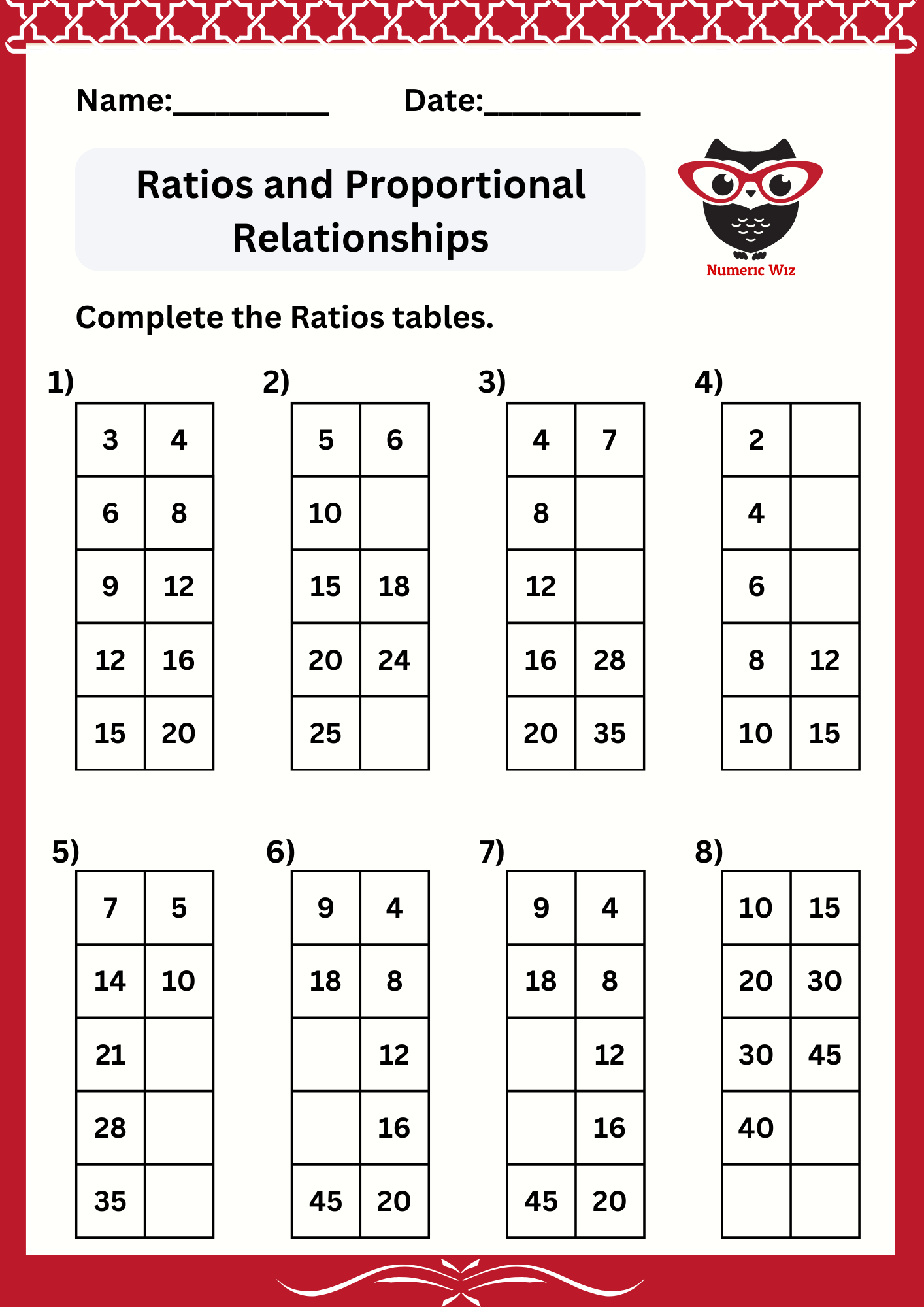
Dive deep into ratio tables with this comprehensive resource designed to make learning ratios simple and effective. Ratio tables are a powerful tool for understanding proportional relationships, and this guide is packed with examples to help you master them.

| A | B |
|---|---|
| 2 | 4 |
| 4 | ? |
| ? | 16 |
The ratio A:B=2:4, or 1:2.
To find B when A=4:
B=4×2=8
To find A when B=16:
A=16÷2=8
Completed Table:
| A | B |
|---|---|
| 2 | 4 |
| 4 | 8 |
| 8 | 16 |
| X | Y |
|---|---|
| 3 | 9 |
| 6 | ? |
| 12 | ? |
Solution:
The ratio X:Y=3:9, or 1:3.
To find Y when X=6:
Y=6×3=18
To find Y when
X=12: Y=12×3=36
Completed Table:
| X | Y |
|---|---|
| 3 | 9 |
| 6 | 18 |
| 12 | 36 |
| M | N |
|---|---|
| 20 | 5 |
| 40 | ? |
| ? | 25 |
Solution:
The ratio
M:N=20:5, or 4:1.
To find N when M=40:
N=40÷5=8
To find M when N=25:
M=25×5=125
Completed Table:
| M | N |
|---|---|
| 20 | 5 |
| 40 | 8 |
| 125 | 25 |
| A | B |
|---|---|
| 1 | 2 |
| 2 | 4 |
| 3 | 6 |
Table 2:
| A | B |
|---|---|
| 2 | 4 |
| 4 | 8 |
| 5 | 10 |
For Table 1, the ratio B:A is: 2:1, 4:2=2:1, 6:3=2:1.
The ratio is consistent as 1:2.
For Table 2, the ratio B:A is: 4:2=2:1, 8:4=2:1, 10:5=2:1.
The ratio is also consistent as 1:2.
Conclusion: The ratios in both tables are equivalent.
This focused guide on ratio tables is perfect for students, teachers, and anyone looking to understand ratios in a structured, hands-on way. With plenty of examples and clear instructions, you’ll master ratio tables in no time!
Let’s explore the world of ratios and uncover their amazing patterns!"
For a limited time
